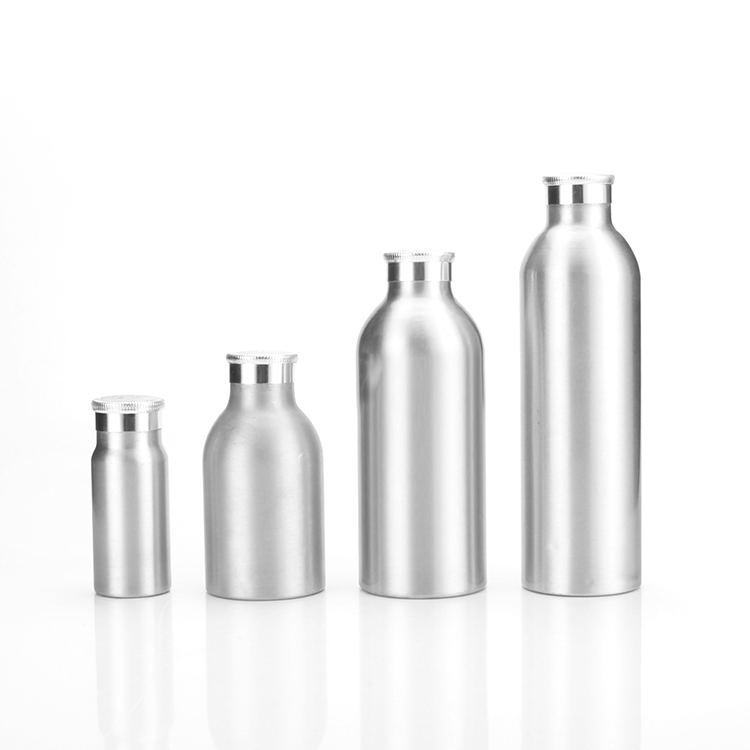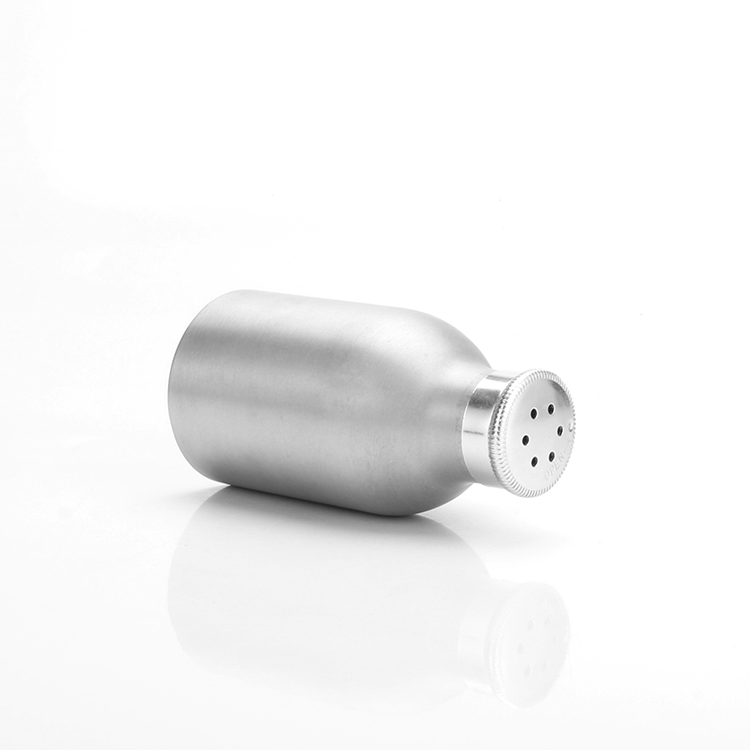Aluminum Talcum Powder Bottle manufacturer
Aluminum Talcum Powder Bottle manufacturer
- Material: 99.7% aluminum
- Cap: Aluminum powder cap
- Capacity:100-430ml
- Diameter(mm): 36, 45, 50, 53, 66
- Height(mm): 60-235
- Thickness(mm): 0.5-0.6
- Surface finish: Polishing, Color painting, Screen printing, Heat transfer printing, UV coating
- MOQ: 10,000 PCS
- Usage: Powder, Talcum
Our Bottle production processes:
1. Impact Extrusion Presses
Impact extrusion presses play an important role in production lines for aluminum bottles. It’s the first machine in a long and complex manufacturing process. The starting material is aluminum slugs several millimeters thick. During reverse impact extrusion, the aluminum slug flows between the die and the punch against the press movement during the forming process. This is how thin-walled aluminum tubes are created.
2 .Trimming And Brushing
The aluminum tube must be the same length. An essential step in the elaborate decoration is trimming to a given coat length. When aluminum tubes leave the impact extrusion presses, they do not meet the requirements for painting and Printing. Burr-free cutting first brings them to the desired size, the trimmed length. The aluminum is still rough and streaky, but additional brushing of the can remove the tiny unevenness and create a smooth surface – the ideal preparation for base coating.
3. Transfer
In order for production to run fully automatically, the tubes have to be transferred from one transport chain to the next. The tubes are first removed from the chain bars onto a rotating drum with vacuum troughs. If the vacuum is briefly interrupted, the tube falls onto a second drum, which is located below the first. From there, the part is pushed back onto the transport rods of the subsequent chain – the transfer is complete.
4. Washing
The surfaces of aluminum tubes must be degreased, cleaned, and dried before decoration. Another washing process is required later if these containers are used in the food industry. Cleanliness is the top priority to make sure that the coating layer protects the tube surface perfectly. Washing systems clean aluminum tubes inside and out with a washing solution so that the coating adheres optimally.
5. Drying
The quality of tube decoration will only be good if Printing, coating, and drying make a perfect match.
6. Iner Coating
Take out dry bottles and put them into the inner coating machine. There are nine guns to make sure everywhere has an inner coating. Then put them in the backing box again, and the temperature reached 230 degrees. We use different inner coating types according to product usage. Food products use food-grade coating (BPA Free or BPA-Ni). Use an anti-corrosive inner coating for strong acid and strong alkali.
7. Base Coating
The base coating creates the basis for clean Printing on aluminum tubes. There are two base coatings, white and transparent. The white base coating fulfills two tasks in decorating: It evens out the fine unevenness on the surface of aluminum tubes and forms the background for the print image. A transparent base coat supports the attractive character of brushed aluminum – an elegant solution that makes a perfect impression on tubes.
8.Offset Printing
Offset printing, also called offset lithography, is an indirect flat printing process. In the first step, the ink is transferred from the printing block onto a rubber cylinder, in a second step, onto the tubes. The offset printing machine supports up to 9 colors, and these 9 colors are printed on the tube almost at the same time.
9. Top Coating
Top coating is another layer of lacquer that refines the surface and protects the print from damage. Even attractive printed image quickly loses its advertising effect if it suffers from abrasion or scratches. The always transparent top coating protects the surface of the container from mechanical damage after Printing. There are two choices in the top coating, mat or glossy. It should be noted here that although the effect of matte is better, it is easier to stain than glossy.
10. Necking
Narrow waist, attractive shoulders – This is the key process for bottle shaping. This shaping process, known as necking, is technically demanding because the bottles are already printed and coated. But the sophisticated necking process is worth it! Because consumers always like bottles with unique shapes. The tube gets shaped into a bottle with the help of 20-30 differently necking molds, each one moving the tube further towards the final shape. The aluminum tube will change a little in each process. If the deformation is too large, the tube will break or have a deformation step. If the deformation is too small, the number of molds may be insufficient.
Necking is A challenging task because the tubes have already been printed and coated. The coated must be elastic enough to withstand the deformation. And the necking molds are always spick and span to protect the base coating and the Printing.
If the shoulder shape is about an attractive appearance, the technical process of the bottle opening is more important, depending on the closure: spray head, valve, hand pump, or screw cap with thread. The shape of the opening must be adapted to this in any case. Therefore, the last few necking molds are crucial.













